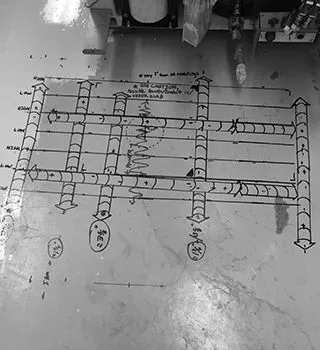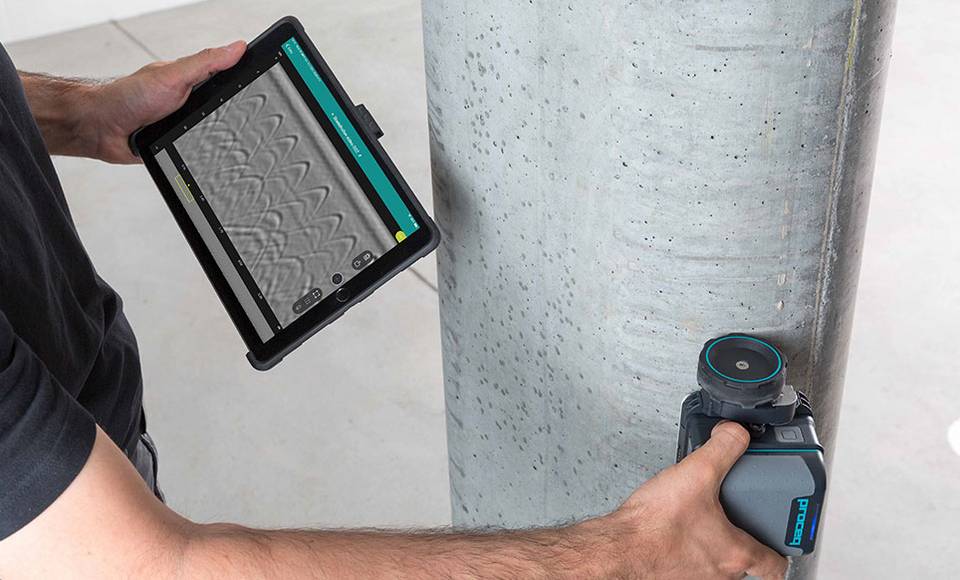Accuracy in Building with Concrete Scanning and Imaging
Wiki Article
Revolutionizing Concrete Evaluation: The Power of GPR Scanning in Construction
Are you tired of typical methods for inspecting concrete in building and construction? Look no further! GPR scanning is right here to revolutionize the method you examine concrete. With its innovative modern technology, GPR scanning provides many benefits over typical methods. In this post, we will discover the fundamentals of GPR innovation, its applications in construction, and the future patterns and developments that will certainly shape the industry. Prepare to find the power of GPR scanning in building and construction!
The Fundamentals of GPR Modern Technology
If you're curious concerning the basics of GPR innovation, you'll be surprised at just how it changes concrete assessment. Ground Passing Through Radar (GPR) is a non-destructive testing technique that makes use of electro-magnetic waves to create photos of subsurface frameworks.GPR technology has various applications in the area of concrete evaluation. In addition, GPR can determine the existence of utilities, such as pipes and wires, ingrained within the concrete, helping to prevent accidental damages during building or improvement jobs.
With GPR, building and construction experts can conserve time and cash by avoiding unneeded repair services, ensuring safety, and boosting overall project performance. By transforming concrete examination, GPR technology has become an important device in the building industry.
Applications of GPR Scanning in Construction
You can find a large range of applications for GPR scanning in the building market. With its ability to pass through other and concrete products, GPR scanning has become a vital tool for construction professionals. One of the key uses GPR scanning is to situate rebar and other embedded objects within concrete structures. By offering real-time photos of the subsurface, GPR scanning enables service providers to prevent destructive these crucial elements throughout renovations or fixings.Along with locating rebar, GPR scanning can likewise be used to identify gaps or tooth cavities within concrete. This is especially useful for guaranteeing the architectural integrity of a structure or bridge. By detecting locations of weak point, construction employees can take the essential steps to enhance these sections, avoiding potential collapses or accidents.

General, GPR scanning has actually changed the way building experts approach concrete evaluation. Its adaptability and accuracy make it an important device for ensuring the safety and effectiveness of building and construction jobs.
Advantages of GPR Scanning Over Standard Methods
The advantages of GPR scanning over conventional methods include its ability to supply real-time pictures, locate hidden things, and precisely map underground utilities. With GPR scanning, you can see what's occurring underneath the surface area in real-time, enabling for immediate decision-making. Unlike typical methods that require taxing and costly excavation, GPR scanning offers instantaneous pictures, saving you time and cash. This technology is particularly useful in building tasks where time is of the essence.GPR scanning additionally has the exceptional ability to locate covert objects. Whether it's buried pipes, wires, or rebar within concrete structures, GPR scanning can find them precisely, minimizing the threat of harming these items throughout building. This not only guarantees the safety and security of employees yet likewise prevents potential pricey repairs down the line.
Additionally, GPR scanning is unbelievably reliable in precisely mapping underground energies. It offers comprehensive info regarding the area, depth, and dimension of buried utilities, permitting construction teams to collaborate with accuracy and stay clear of unintended damage. This degree of accuracy ensures that projects remain on timetable and within budget.
Challenges and Limitations of GPR Scanning in Concrete Inspection
To properly deal with difficulties and limitations in concrete inspection, it is very important to understand the capacity for incorrect analyses in GPR scans. When utilizing Ground Passing through Radar (GPR) for concrete examination, false readings can occur because of numerous aspects. One usual variable is the existence of rebar within the concrete. Concrete Scanning and Imaging. GPR scans can sometimes misinterpret the representations from rebar as fractures or gaps, leading to inaccurate results. Additionally, GPR scans are delicate to adjustments in product buildings, such as moisture material or gaps. This implies that variations in dampness levels or the presence of air pockets can also cause false readings. Additionally, GPR scans can be influenced by surface problems, such as harsh or unequal surface areas, which can trigger signal distortion and misconception. When interpreting GPR scan outcomes and to cross-validate them with various other assessment approaches to ensure precision, it's vital to think about these elements. By comprehending the capacity for incorrect analyses and taking essential precautions, you can overcome the limitations and difficulties associated with GPR scanning in concrete evaluation, and properly use its power to revolutionize the construction sector.Future Trends and Innovations in GPR Scanning for Building
By accepting brand-new modern technologies and developments, you can remain in advance of the curve and take advantage of the future patterns and advancements in GPR scanning for the construction sector. Among the vital future patterns is the development of advanced GPR systems that offer greater resolution and improved precision. These systems will enable more specific mapping and discovery of subsurface functions, making it less complicated to determine prospective hazards and plan building and construction tasks appropriately.
Additionally, there is ongoing r & d in the area of man-made intelligence (AI) and device discovering (ML) for GPR scanning. These modern technologies have the possible to automate data evaluation and look at this website analysis, making the scanning procedure quicker and much more efficient. AI and ML formulas can gain from previous scans and enhance their accuracy over time, causing even more reputable results.
Overall, the future of GPR scanning in the building industry looks appealing. By staying on par with the latest technologies and fads, you look what i found can boost your construction projects, lower expenses, and make certain the security and longevity of your frameworks.
Verdict
In conclusion, you currently recognize the revolutionary power of GPR scanning in building. As the building industry continues to progress, we can expect to see additional technologies and improvements in GPR scanning, making it a vital component of future building and construction projects.With its capacity to penetrate other and concrete materials, GPR scanning has actually become a very useful tool for building experts. Whether it's buried pipes, wires, or rebar within concrete frameworks, GPR scanning can spot them properly, reducing the risk of damaging these objects throughout building. By recognizing the possibility for false readings and taking required precautions, you can get over the limitations and challenges associated with GPR scanning in concrete evaluation, and effectively utilize its power to transform the building and construction market.
By accepting new innovations and advancements, you can remain in advance of the contour and advantage from the future fads and innovations in GPR scanning for the construction market - Concrete Scanning and Imaging. As the construction sector proceeds to develop, we can anticipate to see more innovations and innovations in GPR scanning, making it an important component of future building Your Domain Name and construction jobs
Report this wiki page